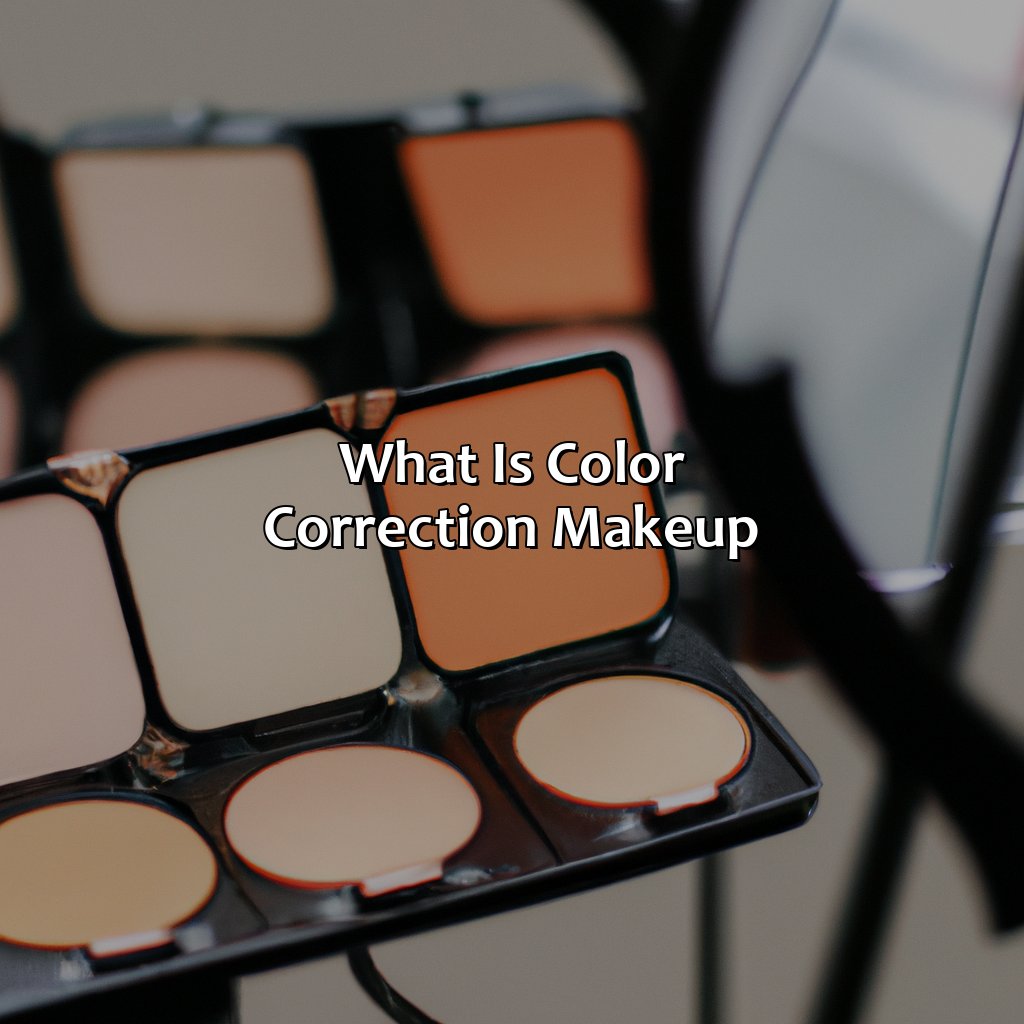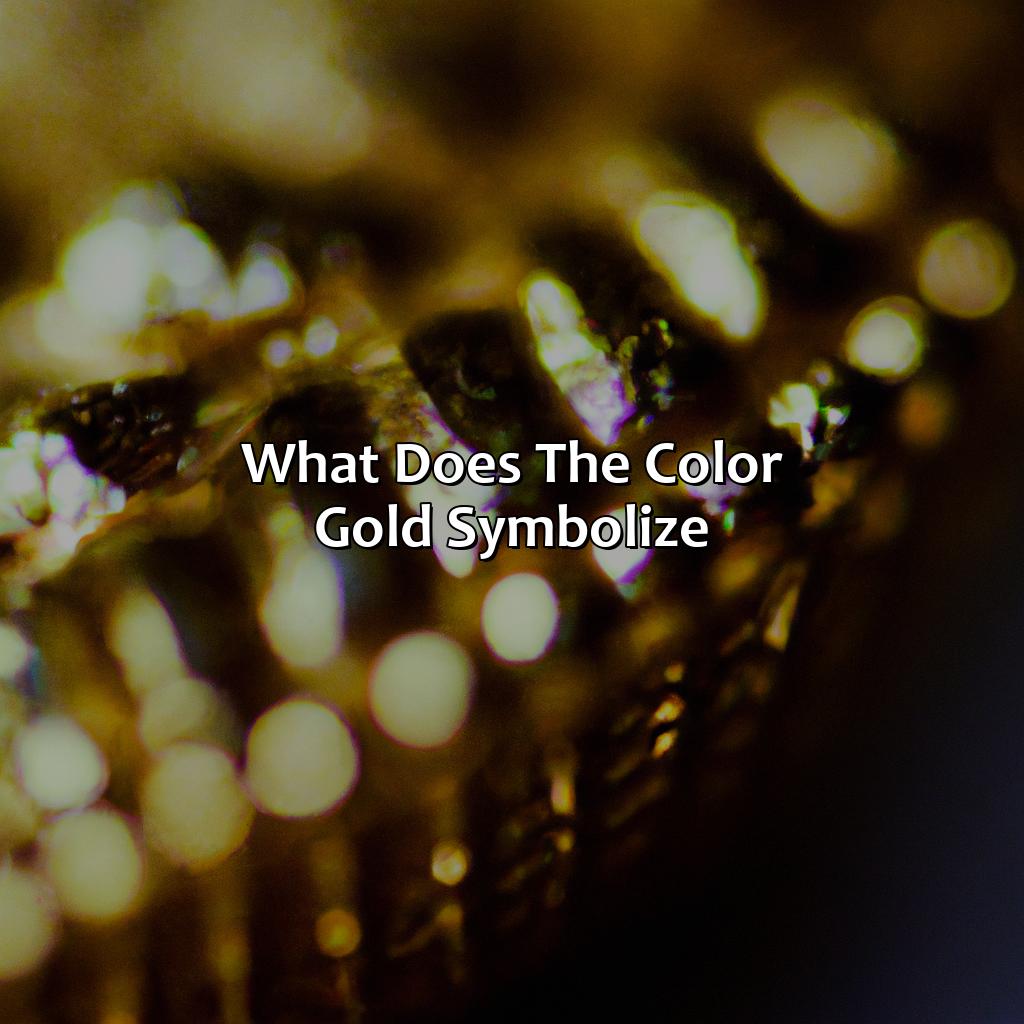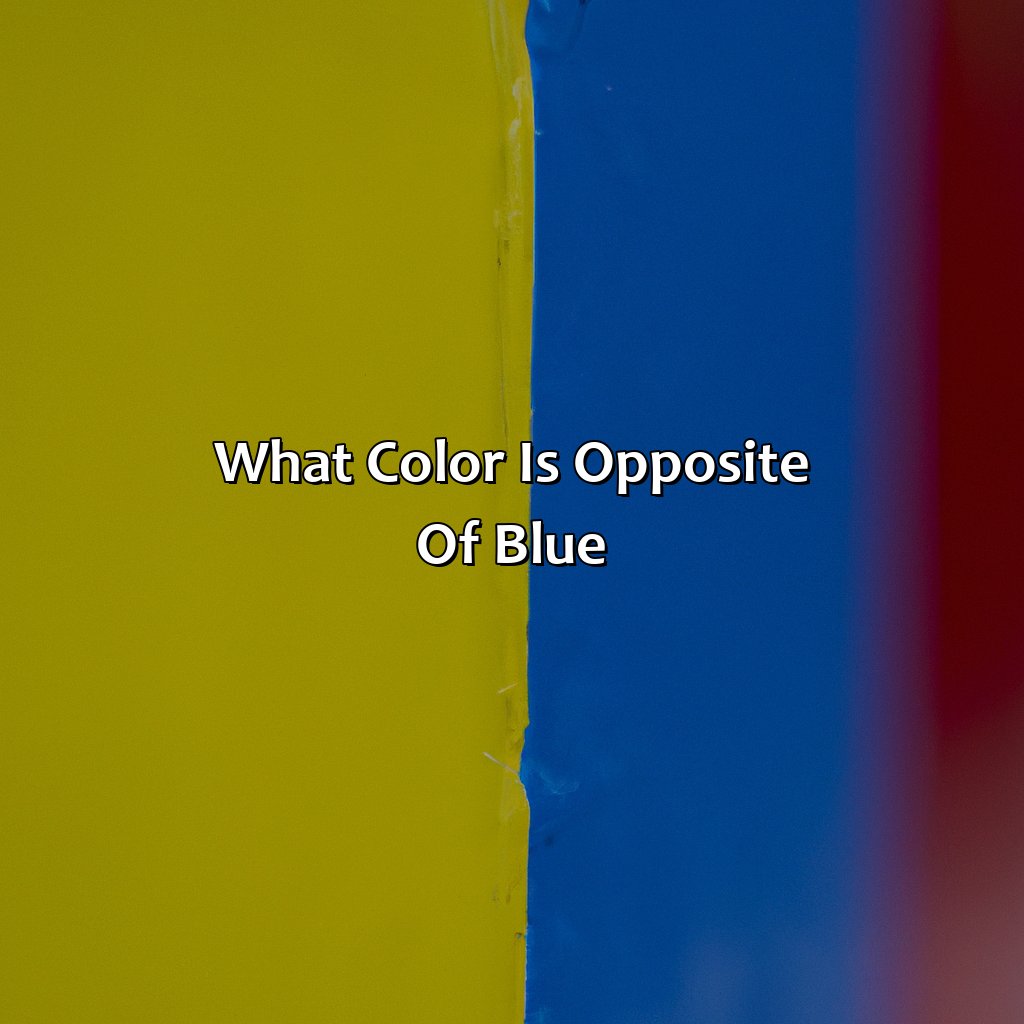Key Takeaway:
- Color correction makeup is a technique that uses specific shades to neutralize skin discoloration and imperfections.
- The four common types of color correction makeup include green for redness, purple for sallow skin or hyperpigmentation, pink/peach for dark circles, and yellow for blemishes or tattoo cover-up.
- To apply color correction makeup, determine your skin tone and the specific color correction need, then apply and blend out using a brush or sponge before applying foundation.
Understanding Color Correction Makeup

Photo Credits: colorscombo.com by Albert Hernandez
Color correction makeup, also known as color correcting cosmetics, refers to the use of specific hues to conceal flaws in the skin’s tone. It works by using complementary colors to neutralize and balance out any discoloration or skin imperfections, giving a smoother and more even complexion. Color correction techniques can be used by anyone, regardless of skin type or tone, and a variety of color correcting makeup brands are available in the market along with color correcting makeup reviews to assist in choosing the right product. To achieve the best results, it is recommended to apply color correcting makeup before foundation. This technique can help improve the overall appearance of the skin and provide a flawless, natural look.
Types of Color Correction Makeup

Photo Credits: colorscombo.com by Joseph Davis
Familiarize yourself with color correction makeup! Use these solutions: cream, primer, powder, concealer, palette and more. Here are four sub-sections to explore:
- Green for redness
- Purple for sallow skin
- Pink/peach for dark circles
- Yellow for blemishes
Green Color Corrector
When it comes to color correction makeup, a popular choice is the green color corrector. This type of makeup is used to balance out redness on the skin, which can be caused by rosacea or acne scars.
The green pigment in the color corrector helps to neutralize the redness, resulting in a more even and natural-looking skin tone. Applying too much green color corrector can result in a gray cast on the skin, so it’s important to use it sparingly and blend well.
For those with severe redness, using a green color corrector before applying foundation can provide a more flawless finish. Some products combine both the green color corrector and foundation for convenience.
It’s also important to note that not all green color correctors are created equal. Some may be better suited for certain skin tones or types than others. Doing research and trying out different products can help determine which one works best for individual needs.
Interestingly, the use of green pigments for color correcting dates back to ancient times when Egyptian women used malachite powder to counteract redness on their faces. Today, modern formulations make it easier than ever to achieve a flawless complexion with the help of a green color corrector.
Wave goodbye to sallow skin, hyperpigmentation and melasma with the magical powers of purple color corrector.
Purple Color Corrector
Purple Hue Neutralizer for Color Correction Makeup
For color correction makeup, a purple hue neutralizer can be used to balance out yellow undertones. This is particularly useful for individuals with sallow skin or those dealing with hyperpigmentation and melasma.
- Purple hue neutralizers work best on light to medium skin tones
- They are applied before foundation
- A small amount of product goes a long way
- Blend well for a natural finish
- Should not be used on areas with redness or blemishes
- Can also be used as an under-eye brightener
Additionally, it’s important to note that different types of color correctors work well for different skin concerns. While purple hue neutralizers work great on sallow skin, green color correctors are better suited for covering up redness and pink/peach correctors are ideal for under-eye circles. When selecting the right type of color corrector, consider the specific concern you’re trying to address.
To get the most out of your purple color corrector, ensure you follow proper application techniques. Use small amounts and blend well for a natural look. Avoid using too much product, especially in areas with blemishes or redness. For a brighter look under the eyes, apply the purple hue neutralizer underneath concealer and then blend well. By following these tips, you can effectively use purple tone neutralizers as part of your overall color correction makeup routine.
Banish those under-eye circles and look like a prom queen with the magical powers of pink/peach color correctors.
Pink/ Peach Color Corrector
This color correction makeup for dark circles is commonly used by teenagers for proms, weddings and other special occasions. For those who have allergy-induced pigmentation or constantly suffer from tired eyes, this color corrector works wonders.
To use this makeup product, simply apply it onto the areas where you need to neutralize blue or purple colors. Blend it well into your skin with a brush or your fingers before applying foundation on top.
Interestingly, Pink/ Peach Color Corrector was first used by Hollywood makeup artists in the 1960s. They applied it to actors’ faces to counteract any signs of fatigue caused by long hours spent shooting movies.
Today, Pink/ Peach Color Corrector continues to be popular among many consumers for its ability to improve skin tone and give a brighter complexion.
Looking like a Simpson character isn’t the goal with yellow color corrector, but it’s a great way to conceal blemishes and cover up tattoos.
Yellow Color Corrector
The yellow color corrector serves as an essential tool for neutralizing bluish or purplish discolouration on the face, particularly under-eye circles. Yellow has a brightening effect and effectively hides shadows, giving the skin a radiant glow.
When applying the yellow color corrector, start with a small amount as it is highly pigmented. Apply it using your fingertips or a concealer brush in light taps on the areas that need to be corrected. The product can also be mixed with foundation or concealer to create a smooth finish.
For those looking to wear color correction for blemishes or scars, yellow can also work by neutralizing any purple undertones in these areas. It can even provide good coverage for tattoo cover-up.
Additionally, while many assume that makeup is solely for women, yellow color-correcting makeup can also benefit men. It effectively masks dark circles and redness from razor burn, making for a well-groomed appearance.
To make the most out of your yellow color corrector, it is recommended to choose products that are best suited for your skin type and skin tone. For those with fairer skin tones, opt for pale shades of lemon; whereas darker skinned individuals may look better with deeper golden hues.
Turn into a color correction pro with these simple steps to flawless skin.
How to Apply Color Correctors
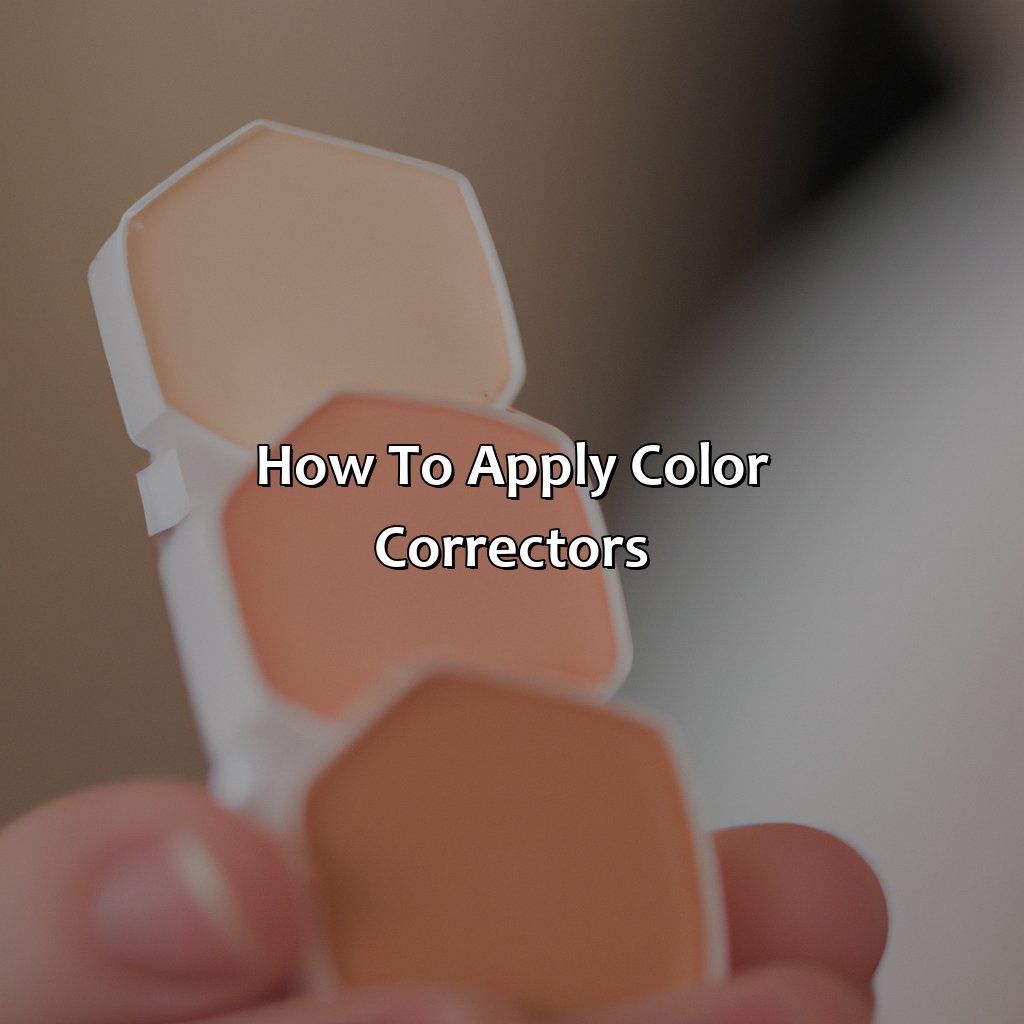
Photo Credits: colorscombo.com by Ronald Moore
Want to know how to color correct your makeup? Follow this guide! We’ll show you techniques for applying green, purple, pink/peach, and yellow color correctors. Our step-by-step tutorial will teach you the basics of color correction makeup. Once you do it, you’ll see an amazing transformation in your look! Try color correction makeup before and after for the best results.
Applying Green Color Corrector
When it comes to color correction makeup, using a green color corrector can be extremely helpful in reducing the appearance of redness on the skin. Here’s a quick guide on how to apply green color corrector:
- Start with a clean and moisturized face. Apply your regular primer or foundation if necessary.
- Take a small amount of green color corrector and apply it directly onto areas of redness, such as around the nose or on any blemishes.
- Use your fingers or a makeup brush to blend the product evenly into your skin. Make sure there are no harsh lines or patches left behind.
- Once you’ve blended in the product, go ahead with your regular concealer, foundation, or powder application over it.
- Lastly, set your finished look with a setting spray or powder for long-lasting wear.
It’s important to note that less is more when it comes to using green color corrector. Be sure to start off with small amounts of product and build up as needed for best results.
When applying green color corrector, it’s also important to pay attention to the undertones of your skin in regards to choosing the right shade of green corrector. As always, do a patch test before going all-in on a new makeup product.
Interestingly enough, did you know that using green pigments for color correction actually originated from theater makeup? Green tones were used by actors and performers in order to cancel out excessive red stage lights and prevent their faces from looking too flushed onstage.
If you’re feeling blue, don’t worry – applying a purple color corrector will have you glowing in no time.
Applying Purple Color Corrector
With purple color corrector, you can eliminate yellow undertones and dullness from your complexion. Here’s how to apply purple color corrector like an expert:
- Apply primer and foundation first.
- Take a bit of the purple corrector on a brush or sponge.
- Dab it gently on areas that have yellow undertones such as around the mouth, chin, forehead and cheeks.
- Blend well with the help of fingers or beauty blender sponge.
- Repeat if required on deep toned areas.
For best results, always remember to choose the right shade of purple that complements your skin tone.
When using this technique, avoid color over-correction as it can create an unnatural appearance.
Don’t miss out on brightening up your looks with the use of purple color correctors in your makeup routine! Get ready to look like a juicy peach with these tips for applying pink color corrector.
Applying Pink/Peach Color Corrector
To achieve flawless makeup, one needs to apply the right color corrector. Apply pink/peach color corrector smoothly on problematic areas such as dark circles, spots, or pigmentation marks to get radiant skin.
Follow these six simple steps to apply the pink/peach color corrector for optimal results:
- Start by applying a tiny amount of primer
- Use a brush or a sponge and blend the pink/peach color onto your face’s affected areas like under-eye circles.
- Avoid saturating your skin with product and gently dab off any excess with a soft towel
- You can now put on foundation or any other concealer after blending the ‘pink/peach’ makeup in your affected area.
- To ensure it’s long-lasting, you may set your makeup with a powder of similar tint.
- Complete this step by blending everything together until it looks even.
Once applied, Pink/Peach Color Correctors neutralize any purple/blue hue on dark circles without looking cakey. For darker skin tones, peach is an excellent choice since pinkish shades can cause temporary unevenness.
Color-correcting makeup has been used in the world of television and film for ages. They are proficiently formulated to counteract certain discolorations that give little help from regular concealer.
Get ready to say goodbye to those pesky dark circles with the help of yellow color corrector – the superhero of makeup products!
Applying Yellow Color Corrector
Yellow color correctors can be used to combat dark circles, deep scars, and hyperpigmentation. Yellow color helps to brighten up the skin’s appearance by giving a more even complexion while neutralizing discoloration.
- Start by cleansing your face with a mild cleanser and pat dry with a towel.
- Apply hydrating moisturizer onto your face and wait for it to settle into your skin.
- Take the yellow color corrector on a brush or finger and apply them on discolored areas, spreading it evenly.
It is essential not to overuse the product as it may result in an uneven tone or make it too obvious that you have color correction makeup on. Use concealer after applying a yellow-color corrector for best results.
Instead of only focusing on the under-eye area, try using it around other parts of your face with any visible discoloration.
A user once shared her experience about how she was skeptical before trying out yellow-color corrector but was surprised at how well it helped conceal her dark circles better than regular concealers.
Choosing the right color corrector is like picking the perfect wine – it takes some trial and error, but once you find the one, it’s pure magic.
How to Choose the Right Color Corrector
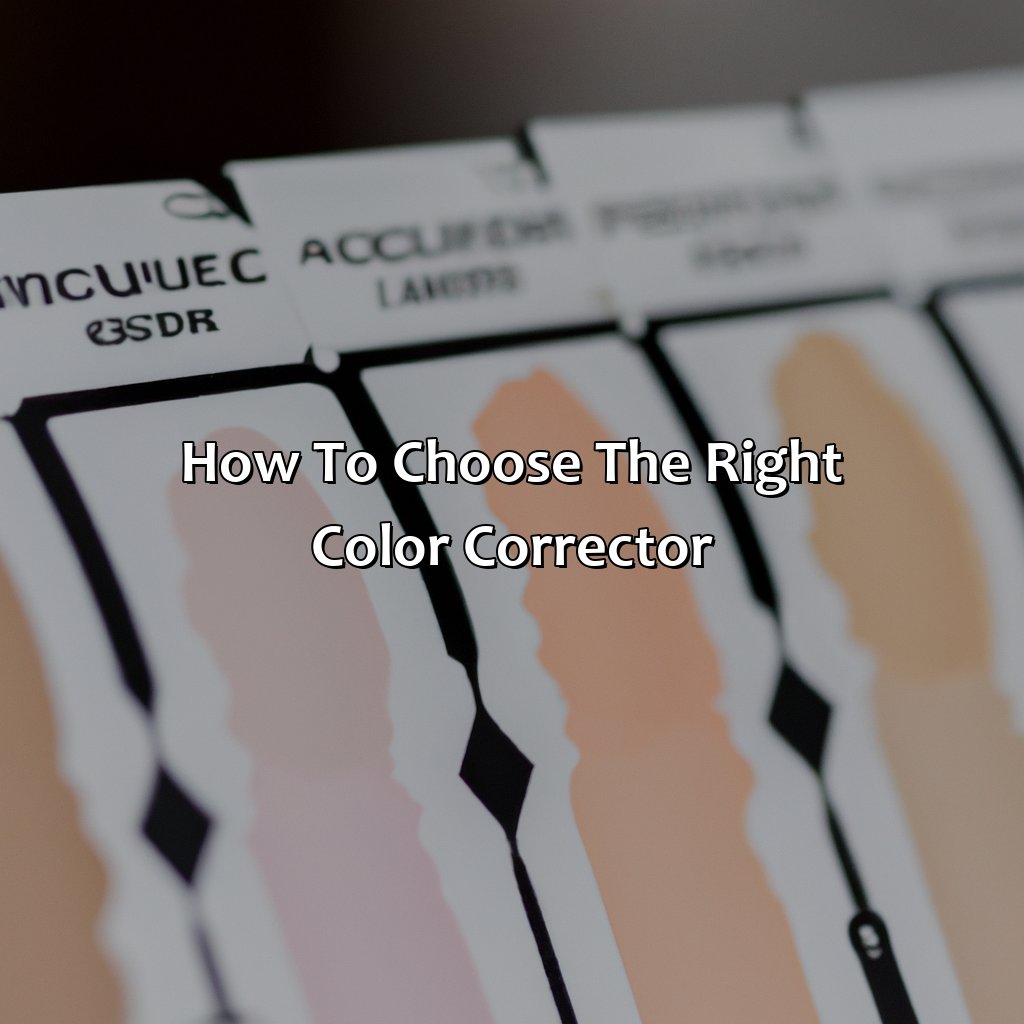
Photo Credits: colorscombo.com by Charles Martinez
Color correction makeup helps to even out skin tone and conceal blemishes. To choose the right color corrector, keep skin concerns in mind and select shades that complement the skin tone. Follow these six steps:
- Identify specific skin concerns, such as redness or dark circles.
- Choose a color corrector shade that corresponds to the concern, such as green for redness or peach for dark circles.
- Test shades on the inside of the wrist or on a small patch of skin before purchasing.
- Apply the color corrector with a brush or sponge, blending into the skin.
- Follow up with foundation and concealer as needed.
- Keep in mind any allergies or skin sensitivities when selecting color correcting products.
It’s also important to note that some color correcting products may work better for sensitive skin than others. Always do a patch test and read ingredient lists before purchasing. Additionally, how to use color correcting makeup also depends on individual skin concerns and desired results.
Fun Fact: According to a report by Grand View Research Inc., the global color cosmetics market size is expected to reach USD 91.8 billion by 2025.
Tips for Using Color Correction Makeup
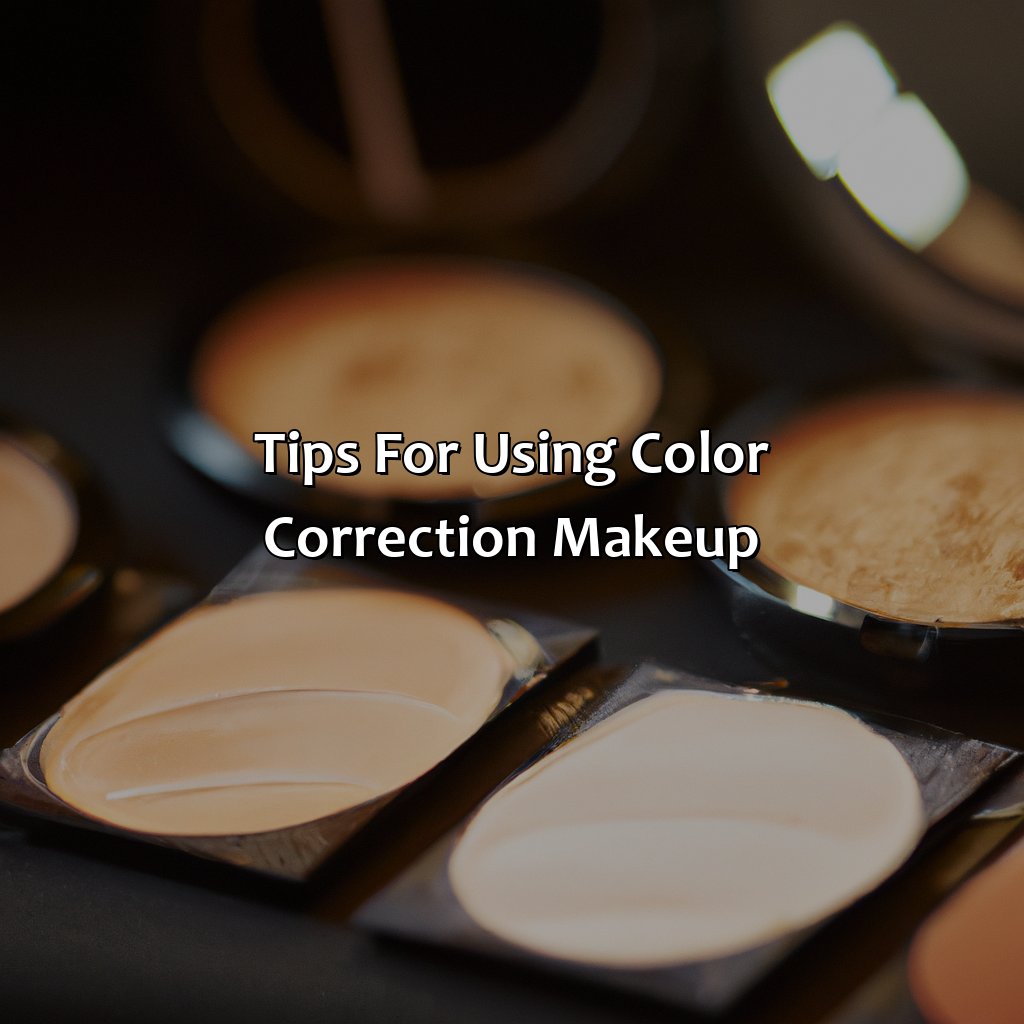
Photo Credits: colorscombo.com by Patrick Nelson
Color correction makeup is used to balance out skin tone and cover up blemishes. Here are some helpful tips to make the best use of it:
- Identify the right color corrector according to your skin tone. For example, green corrector for redness, peach or orange correctors for dark spots and blue correctors for under-eye circles.
- Do not apply too much of the product as it may look cakey. Apply in thin layers and build up gradually if required.
- Always follow up with foundation to even out the skin and blend in the corrector.
- Take care to not apply corrector on unwanted areas and blend it well to avoid visible lines or patches.
Remember to choose products that are compatible with your skin type and tone and apply them with care for optimal results.
For instance, to avoid common color correcting makeup mistakes such as overdoing the product or applying the wrong shade, it is always a good idea to test the product on a small area of your skin first. Additionally, always use color correction makeup suitable for the medium in which the final outcome will be manifested, whether it is for a photoshoot or a stage performance.
You can also explore affordable alternatives or look for color correcting makeup dupes to achieve the desired effect without breaking the bank. Furthermore, watch online tutorials and invest in the right tools such as brushes and sponges to enhance your color correcting skills.
Some Facts About Color Correction Makeup:
- ✅ Color correction makeup is used to neutralize skin tone and minimize imperfections. (Source: Byrdie)
- ✅ Different colors are used to correct different imperfections, such as green for redness and peach for dark circles. (Source: Cosmopolitan)
- ✅ Color correction makeup can be found in various products like primers, concealers, and powders. (Source: Glamour)
- ✅ It is important to choose the right color correction makeup based on your skin tone and the imperfection you want to correct. (Source: InStyle)
- ✅ Color correction makeup should be layered under foundation and other makeup for best results. (Source: Elle)
FAQs about What Is Color Correction Makeup
What is color correction makeup?
Color correction makeup is a cosmetic technique that involves using contrasting colors to balance out imperfections in the skin tone, such as redness, dark spots, or under eye circles.
How does color correction makeup work?
Color correction makeup works by using the principles of the color wheel, where complementary colors cancel each other out. For example, green is used to counteract redness, purple to brighten yellow or dull areas, and orange to neutralize blue tones.
What are the benefits of using color correction makeup?
The benefits of using color correction makeup are numerous, including the ability to achieve a flawless complexion, smoother skin texture, camouflage imperfections, and create a perfect base for your foundation or concealer.
Who can use color correction makeup?
Anyone can use color correction makeup, regardless of age, skin type, or gender. It is especially beneficial for those with uneven skin tones or discoloration caused by acne, rosacea, sun exposure, or hyperpigmentation.
How do I choose the right color correction makeup for my skin tone?
To choose the right color correction makeup for your skin tone, it is important to identify the specific color-related issues you want to address, such as redness, under eye circles, or sallowness. Then, choose the complementary color that cancels out the problem you want to correct and apply it in a sheer layer, building up gradually if needed.
Can color correction makeup replace my foundation or concealer?
No, color correction makeup is not meant to replace your foundation or concealer but rather to supplement them. It creates a smooth base for your makeup and allows for a better application. You should still use your regular foundation and concealer afterward to even out your skin tone and cover blemishes.
